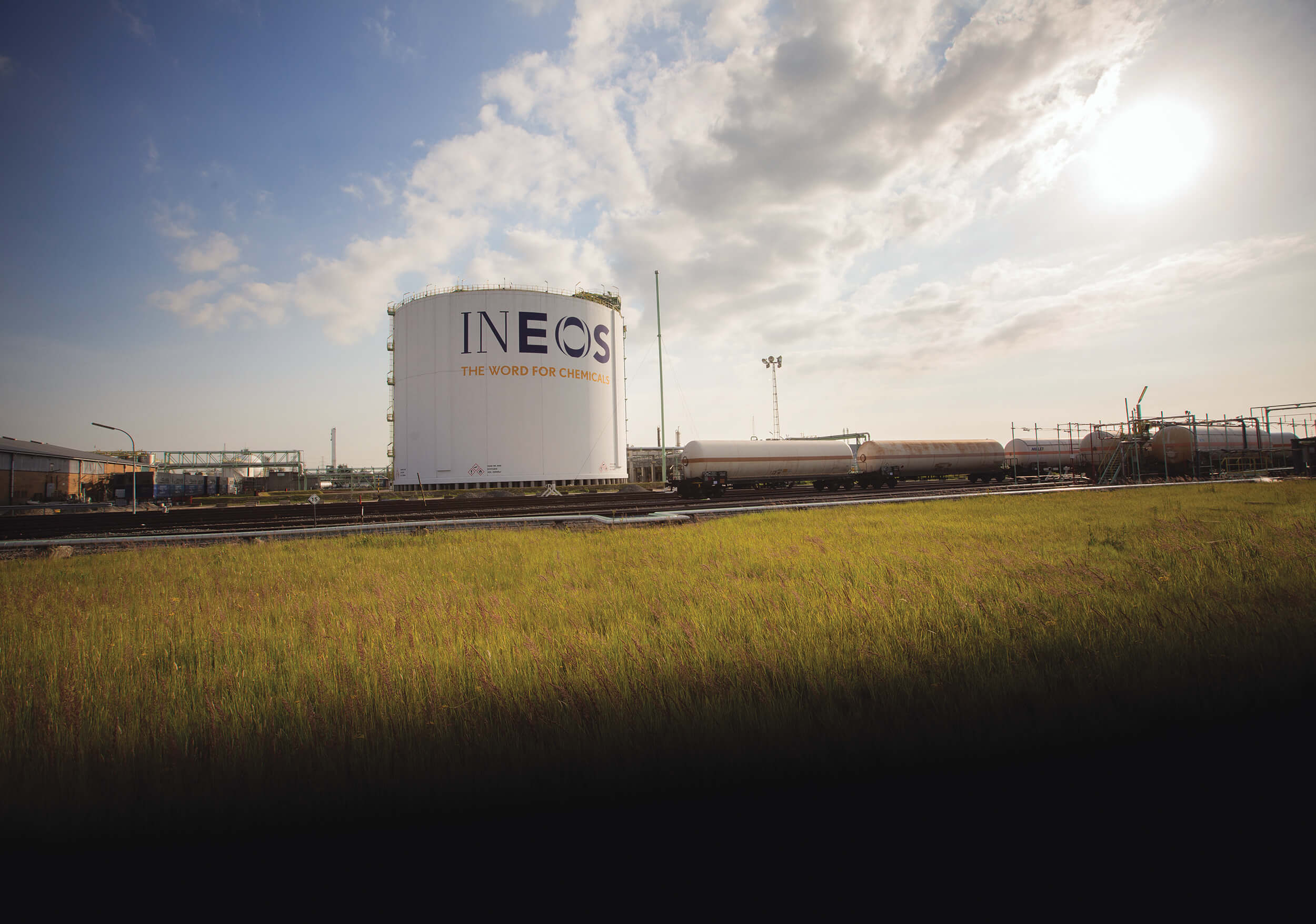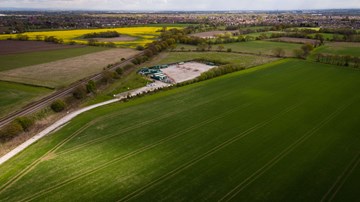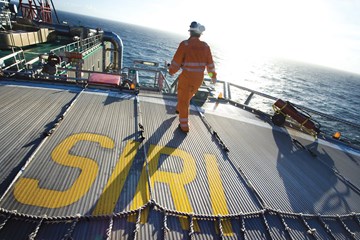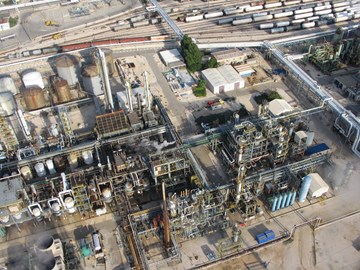ANTWERP has been a magnet for trade ever since it began exporting wine from Germany to England in the 12th century.
So it is rather fitting that it is where Jim Ratcliffe should do his first, major deal when he bought the freehold to a former BP-owned site in Zwijndrecht, Antwerp, 19 years ago and founded INEOS.
Since then The Port of Antwerp has become the most integrated petrochemical cluster on the planet with links to the rest of the world, via sea, rail, and road and an extensive, 1000km pipe network.
And INEOS has grown from just one site in Belgium to become the world’s third largest chemical company with sales of $40 billion and employing 17,000 people at 67 manufacturing sites in 16 countries.
Both clearly shared a vision, saw opportunities where others didn’t and believed in a smarter future that continues to this day.
“INEOS is a big player in our industry in Belgium and has been part of the development and success of this chemical cluster,” said Yves Verschueren, Managing Director of Essenscia, the Belgian association for the chemical industry. “It drives process efficiency to the highest levels and often shows us where the markets are leading us.”
From one site at Antwerp in 1998, INEOS now operates eleven other manufacturing sites in Belgium – in Lillo, Doel, Zandvliet, Geel, Tessenderlo, Jemeppe Sur Sambre, Feluy and Zweijndrecht – and a research laboratory in Neder-Over-Heembeek (NOH) where more than half of the 100+ employee are highly-educated engineers and PhDs from all over the world.
Together INEOS businesses – Oxide, Styrolution, Phenol, Oligomers, INOVYN, ChloroToluene and INEOS O&P Europe – produce products that make modern life possible, and, with 2,500 staff, are the second largest employer in the petrochemical industry in Belgium.
One who remembers the birth of INEOS is Hans Casier, now CEO of INEOS Phenol.
“Jim saw great potential in the site and the business at Zwijndrecht,” he said. “He listened to people’s ideas of what needed to be done to increase production.”
He not only listened but he challenged the staff to do it.
“It was quite a shock to the system,” said Hans. “We were not used to that approach. We were no longer being asked to contemplate what needed to be done. We were being asked to do it. And deep down we knew we had to make it work.”
The turnaround was swift and there was a real focus.
Hans attributed the success to the Belgian teams who not only believed in the plan but had the knowledge and skills to make it happen.
“We may be a small country but we are also quite open-minded which has helped us over the years to attract a lot of inward investment from the likes of Germany, the US, Japan, France and the UK,” he said.
One of the things that INEOS in Belgium has been good at is convincing others – so called Third Parties – to share. To date, 12 of its suppliers and customers now occupy its site at Zwijndrecht, saving money by sharing resources, energy, infrastructure and services.
And it has some impressive statistics of its own.
The largest PAO production plant in the world is run by INEOS Oligomers from Feluy.
Its Geel site, which is championed by outsiders as one of the most energy efficient plants in Europe, produces more than 100 products that are distributed to 76 different countries.
The second largest ethylene oxide unit in Europe is in Antwerp where every year INEOS Oxide produces 400,000 tonnes of the base chemical for almost everything made for modern life.
Lillo has a hand in helping to make two of Belgium’s most important products – the plastic wrappers for its chocolate and a pipeline for its beer.
“The Belgians like their beer so we love the fact that we have made the pipe that transports beer from a brewery in the centre of Bruges to outside the city where it is bottled,” said Veerle Gonnissen, site manager for the Olefins & Polymers North Plants (Geel and Lillo).
One of the site’s other big customers is the UK’s fresh milk market.
“In the UK they use a lot of fresh milk and 70% of the bottles they use are made from our products,” she said.
But that’s not all. The sites also specialise in producing plastics for packaging, medical equipment and, even, artificial grass.
Belgium is also home to the world’s biggest and most efficient phenol and acetone plant, producing 650,000 tonnes of phenol and 425,000 tonnes of acetone a year.
“We have a great team here,” said Marcus Plevoets, site manager for INEOS Phenol. “It is a brand new facility, we have the best technology and the highest energy efficiency.”
Phenol can be found in cleaning products, shower gels, shampoos, aspirin, plastics and mobile phones.
“A life without phenol and acetone is difficult to imagine,” said Marcus, “because these products are everywhere.”
As with all of INEOS’ sites, safety, reliability and growth remain the focus for the team at INEOS Oxide – one of only a few producers in the world of ENB, a very special polymer used predominately in the car industry.
“We have really mastered this over the years,” said CEO Graham Beesley, who, in a previous life when he worked for Procter & Gamble, was one of INEOS’ customers. “There are only two established producers in the world and we are the only one in Europe.”
He said the site had managed to treble its production of ENB by making a series of minor expansions over the 19 years of INEOS’ existence.
Over the years INEOS’ other sites throughout the world have, in fact, looked to Belgium for inspiration in how to be part of a successful petrochemical cluster.
“INEOS does take advantage of being part of such a large and integrated cluster, but it also contributes a lot,” said Yves. “It interacts with the local community and in many respects, through its work, has opened the eyes of people living here. It has certainly helped government officials to understand how innovation can really play a crucial role in the success of this cluster.”
Looking to the future, all INEOS’ Belgian sites have plans to do things better. Sharper, smarter thinking remains top of their list.
A crucial, current project for INEOS Oxide at Zwijndrecht is the construction of a new ethylene oxide storage tank and a fifth alkoxylation reactor.
The site wants to focus on producing more alkoxylates, which can be made into a whole raft of products, but it needs more ethylene oxide on tap, and a fifth reactor on site to cope with the demand.
“This will enable the business to be less reliant on selling ethylene glycol, which, while being important for the business, is more volatile when it comes to profit margins,” said Graham.
INEOS Styrolution is planning to convert an extruder line to produce white-coloured ABS for use in the production of household appliances and electronic devices.
INEOS O&P Europe is planning upgrades and a new catalyst feeding drum so it can run with two different catalysts.
INOVYN wants to extend its membrane electrolysis by 25% and invest in a large-scale potassium hydroxide (KOH) production unit.
And INEOS Phenol is currently exploring ways of working with other industries on the huge site to use energy generated from waste as part of a major initiative.
“It’s early days but we will work hard to make this happen,” said Marcus.
By capturing and reusing wasted steam to power other plants on the site, INEOS will stop 100,000 tons of greenhouse gases being pumped into the air every year.
And that matters to Marcus and his team.
“We need to show society that we do care about the next generation and that we are environmentally friendly,” he said.
Despite the rapid – and continued – growth of INEOS, Belgium retains its special place in Jim’s heart and remains very much at the heart of what and how it does business.
Will it be ignored post-Brexit? Not at all, says Jim.
“Belgium is a great manufacturing country, we have made a huge amount of investment and it has a great track record,” he said.



















